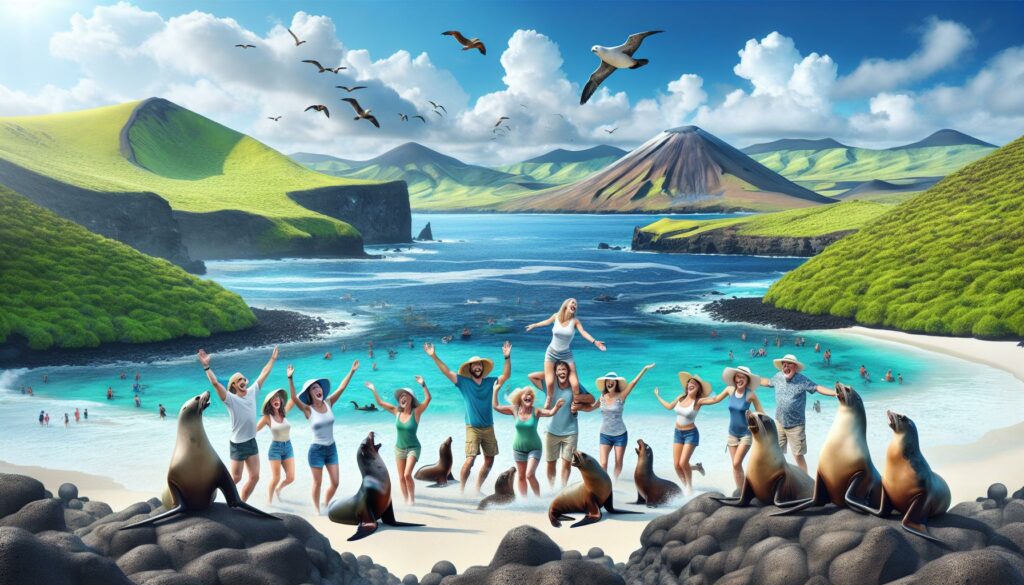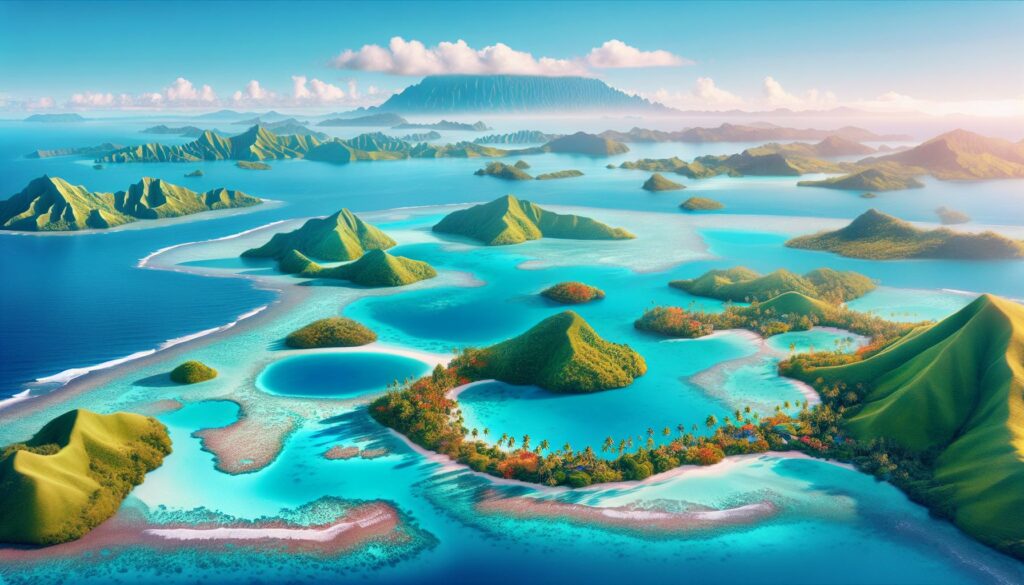As I stepped onto the pristine shores of the Galápagos Islands I knew I was about to experience something extraordinary. This volcanic archipelago off Ecuador’s coast isn’t just another tropical destination – it’s a living museum of natural history that inspired Charles Darwin’s theory of evolution.
I’ve discovered that planning what to do in the Galápagos can feel overwhelming at first. With 19 main islands each offering unique wildlife encounters and adventures there’s an incredible array of experiences to choose from. From swimming with playful sea lions at Gardner Bay to hiking the Sierra Negra volcano on Isabela Island every day brings new wonders in this untamed paradise.
Key Takeaways
- The Galápagos Islands are best visited from December to May, offering warm temperatures (80-85°F) and optimal conditions for both land and water activities.
- Top wildlife encounters include observing giant tortoises at the Charles Darwin Research Station, snorkeling with marine life in Gardner Bay, and watching endemic birds like blue-footed boobies on North Seymour Island.
- Essential activities include snorkeling at Kicker Rock, hiking the Sierra Negra Volcano trail on Isabela Island, and exploring pristine beaches like Tortuga Bay on Santa Cruz Island.
- The three main visitor hubs are Santa Cruz Island (primary gateway), Isabela Island (largest, with five active volcanoes), and San Cristobal Island (rich in marine encounters).
- Visitors can explore via guided land tours ($200+ per day), island-based stays (accommodations ranging from $50-1000/night), or cruise expeditions (4-8 days on various vessel classes).
What To Do in the Galapagos Islands
I’ve discovered December through May offers the warmest temperatures for exploring the Galapagos Islands. This period provides optimal conditions for both land activities and underwater adventures.
Weather and Peak Seasons
The Galapagos climate divides into two distinct seasons with unique characteristics:
Warm Season (December-May)
- Average temperatures: 80-85°F (27-29°C)
- Crystal-clear waters at 75°F (24°C)
- Light afternoon showers lasting 1-2 hours
- Calm seas with excellent visibility for snorkeling
- Peak wildlife activity: sea turtle nesting flamingo breeding
Cool Season (June-November)
- Average temperatures: 70-75°F (21-24°C)
- Water temperatures: 65-70°F (18-21°C)
- Misty mornings with overcast skies
- Rougher seas with nutrient-rich waters
- Peak wildlife activity: penguin migrations whale sharks
Budget Considerations
Tourism patterns affect pricing throughout the year:
| Month | Average Hotel Rate | Tour Costs |
|---|---|---|
| December-January | $250-400/night | $200-300/day |
| June-August | $200-350/night | $180-250/day |
- 15-30% discounts on accommodations
- Reduced rates for guided tours
- Fewer tourists at popular sites
- Last-minute cruise deals
- Flexible booking options
Essential Wildlife Encounters
The Galápagos Islands offer unparalleled opportunities to observe unique species in their natural habitat. I’ve identified three primary wildlife experiences that define the essence of these enchanted islands.
Giant Tortoise Viewing
The giant Galápagos tortoises roam freely at the Charles Darwin Research Station on Santa Cruz Island. I spotted these gentle giants weighing up to 900 pounds grazing in the highlands of Santa Cruz from June through December. The Tortoise Breeding Center on Isabela Island houses 5 different tortoise species, offering close encounters with both adult tortoises and hatchlings.
Marine Life Spotting
The marine ecosystems surrounding the islands teem with diverse aquatic species year-round. Here’s what I encountered during my snorkeling sessions:
- Green sea turtles gliding through Gardner Bay
- Playful Galápagos penguins at Tagus Cove
- Marine iguanas feeding on algae near Fernandina Island
- Hammerhead sharks patrolling the waters of Gordon Rocks
- Sea lions performing underwater acrobatics at La Loberia
- North Seymour Island: Blue-footed boobies performing mating dances
- Española Island: Waved albatrosses from April to December
- Genovesa Island: Red-footed boobies nesting in mangroves
- Floreana Island: Greater flamingos in brackish lagoons
- Darwin Bay: Great frigatebirds displaying their red pouches
| Wildlife Type | Best Viewing Season | Prime Location |
|---|---|---|
| Giant Tortoises | June-December | Santa Cruz Highlands |
| Marine Life | Year-round | Gardner Bay |
| Endemic Birds | April-December | North Seymour Island |
Top Island Activities
The Galápagos Islands offer diverse adventure activities across their volcanic landscapes and pristine waters. I’ve discovered three primary activities that showcase the archipelago’s unique natural wonders.
Snorkeling and Diving Spots
What to do in the galapagos islands? Kicker Rock near San Cristóbal Island stands out as a premier snorkeling location, featuring 300-foot rock formations surrounded by hammerhead sharks, sea turtles and eagle rays. Gordon Rocks off Santa Cruz Island provides advanced diving opportunities with schools of hammerhead sharks from June to December. The Devil’s Crown near Floreana Island offers shallow-water snorkeling among tropical fish, rays and sea lions in a submerged volcanic crater.
Hiking Volcanic Trails
The Sierra Negra Volcano trail on Isabela Island spans 6.2 miles across the second-largest volcanic crater in the world. Bartolomé Island features a wooden staircase trail leading to a summit viewpoint of the iconic Pinnacle Rock and surrounding volcanic landscape. The Cerro Dragon trail on Santa Cruz Island combines volcanic terrain with coastal views, offering sightings of land iguanas and Darwin’s finches along a 1.5-mile path.
Beach Exploration
Tortuga Bay on Santa Cruz Island features a mile-long white sand beach perfect for spotting marine iguanas and sally lightfoot crabs. Gardner Bay on Española Island provides opportunities to swim alongside playful sea lions in crystal-clear waters. Post Office Bay on Floreana Island combines a historic mail barrel site with secluded beaches for watching green sea turtles nest from December through May.
| Location | Activity Type | Best Time | Key Wildlife |
|---|---|---|---|
| Kicker Rock | Snorkeling | Year-round | Hammerhead sharks, Sea turtles |
| Sierra Negra | Hiking | Dec-May | Land iguanas, Darwin’s finches |
| Tortuga Bay | Beach | Year-round | Marine iguanas, Sally lightfoot crabs |
Island Hopping Guide
Island hopping in the Galápagos reveals distinct ecosystems on each inhabited island. I’ve mapped out the essential experiences across the three main visitor hubs based on my extensive exploration of the archipelago.
Santa Cruz Island Highlights
Santa Cruz serves as the primary gateway to the Galápagos, hosting the Charles Darwin Research Station in Puerto Ayora. I recommend starting at Tortuga Bay’s pristine white-sand beach for marine iguana spotting followed by kayaking in the mangroves. The highlands offer wild tortoise viewing at El Chato Reserve while Las Grietas provides a unique swimming experience between volcanic cliffs.
Key activities:
- Explore the Charles Darwin Research Station’s tortoise breeding program
- Snorkel at Las Bachas Beach with reef sharks
- Hike through lava tunnels at Santa Cruz Highland
- Shop at the local fish market alongside curious sea lions
- Visit the Twin Craters (Los Gemelos) volcanic formations
Isabela Island Adventures
Isabela, the largest island, features five active volcanoes and abundant wildlife viewing opportunities. The Tagus Cove trail leads to Darwin Lake, offering historic pirate anchorage views. Wall of Tears presents a compelling historical site while Las Tintoreras islet provides prime snorkeling with white-tipped reef sharks.
Notable spots:
- Hike Sierra Negra Volcano (6-8 hour round trip)
- Snorkel at Concha Perla with penguins
- Visit the Giant Tortoise Breeding Center
- Observe flamingos at Villamil Lagoon
- Swim at Puerto Villamil Beach with marine iguanas
San Cristobal Experiences
San Cristobal combines rich history with diverse marine encounters. Kicker Rock stands out for its snorkeling with hammerhead sharks while Interpretation Center provides cultural context. La Loberia beach offers peaceful sea lion observation opportunities against stunning coastal views.
- Snorkel at Kicker Rock (León Dormido)
- Visit the Interpretation Center’s exhibits
- Surf at La Loberia Beach
- Hike Frigatebird Hill for panoramic views
- Explore Puerto Chino’s secluded beach
| Island | Distance from Santa Cruz | Average Boat Travel Time |
|---|---|---|
| Isabela | 30 miles | 2.5 hours |
| San Cristobal | 50 miles | 2 hours |
| Santa Cruz | Central Hub | N/A |
Planning Your Visit
The Galápagos Islands offer three primary ways to explore: guided land tours, island-based stays or cruise expeditions. I’ve discovered these options each provide unique advantages for experiencing the archipelago’s diverse ecosystems.
Tour Options Available
Guided land tours range from day trips to 14-day comprehensive packages, starting at $200 for single-day excursions. Small-group tours (8-16 people) provide intimate wildlife encounters with certified naturalist guides. Cruise expeditions span 4-8 days on luxury or tourist-class vessels, accommodating 16-100 passengers. For independent exploration, I recommend booking individual island tours through local operators in Puerto Ayora Santa Cruz or Puerto Baquerizo Moreno San Cristóbal.
Accommodation Choices
Hotels on inhabited islands offer three distinct categories:
- Luxury eco-lodges ($500-1000/night): Safari-style tents at Pikaia Lodge Santa Cruz or waterfront suites at Semilla Verde
- Mid-range hotels ($150-300/night): Semilla Verde Lodge Santa Cruz or Blue Marlin San Cristóbal
- Budget guesthouses ($50-100/night): Drake Inn Isabela or Blue House Santa Cruz
Cruise vessels provide:
- Luxury ships (16 passengers): Private balconies exclusive naturalist guides
- First-class boats (36 passengers): Spacious cabins scheduled activities
- Tourist-class vessels (100 passengers): Basic amenities shared spaces
Transportation Tips
Inter-island transfers operate through:
- Speed boats: Connect Santa Cruz Isabela San Cristóbal ($30-40 per journey)
- Air transfers: Flights between Baltra San Cristóbal Isabela ($200-300 round trip)
On individual islands:
- Water taxis: Connect ports to beaches ($1-5 per ride)
- Public buses: Transport to highlands tortoise reserves ($2-5 per trip)
- Rental bikes: Available in Puerto Ayora Puerto Baquerizo ($15-25 daily)
- High season cruises: 6-8 months ahead
- Hotels: 3-4 months notice
- Day tours: 48-72 hours prior
Play on the Island
From swimming with playful sea lions to hiking active volcanoes I’ve discovered that the Galápagos Islands offer an unparalleled adventure for nature enthusiasts. What to do in the galapagos islands? The islands’ unique wildlife pristine beaches and volcanic landscapes create an extraordinary destination that’s worth every effort to visit.
Whether you choose a cruise expedition island-based stay or guided tour I’m confident you’ll find your perfect way to explore this remarkable archipelago. The key is planning ahead and choosing the right season that matches your interests and budget.
I’ve found that these enchanted islands aren’t just a destination – they’re a life-changing experience that will forever transform how you see our natural world. It’s truly a place where adventure meets preservation in the most spectacular way.



